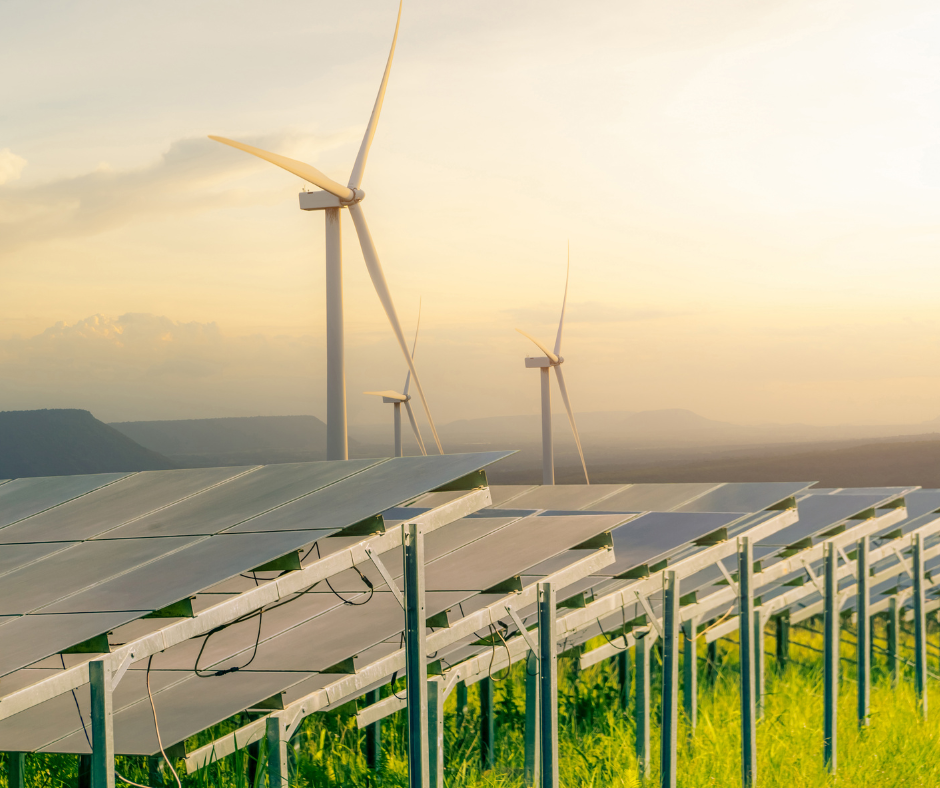3 Sustainable Resources In Manufacturing For Your Business
As businesses look for strategies to balance productivity with environmental responsibility, integrating sustainable resources has become a popular...
6 min read
 Larry Burton
:
May 28, 2024 10:15:00 AM
Larry Burton
:
May 28, 2024 10:15:00 AM

Sustainability isn’t just a buzzword in today’s industry - it’s redefining how manufacturers do business.
The definition of sustainability refers to the ability to meet the needs of the present without compromising the ability of future generations to meet their own needs. It involves balancing environmental, social and economic considerations to ensure that resources are used efficiently, ecosystems are preserved, and social equity is upheld.
In today’s industry, companies are increasingly recognizing that by embracing sustainable practices, it’s not only good for the planet, but good for business. Let’s take a look at some of the ways sustainable practices have entered industry and how your business can foster long-term resilience in an ever-changing global landscape.
Sustainability in industry today includes a range of practices and initiatives aimed at minimizing environmental impact, conserving resources, promoting social responsibility and ensuring economic viability. In fact, more companies are prioritizing sustainable manufacturing through conserving energy, preserving natural resources and reducing the amount of waste they generate.
conserving resources, promoting social responsibility and ensuring economic viability. In fact, more companies are prioritizing sustainable manufacturing through conserving energy, preserving natural resources and reducing the amount of waste they generate.
Let’s take a look at some of the ways sustainability has come to the forefront in industry today:
For manufacturers that generate hazardous waste, such as solvents, it is particularly important to prioritize sustainable options. Hazardous waste poses significant risks to human health and the environment, including soil and water contamination, air pollution and harm to wildlife and ecosystems.
With the development of technologies like waste-to-energy systems, solvent recycling and wastewater treatment, there is an opportunity for manufacturing facilities to minimize their environmental impact and maximize their environmental protection.
Through energy recycling, businesses can help preserve the natural resources of the planet. At Samex, the waste to energy plant has a capacity to prepare up to more than 40 tons of alternative fuels per day by recycling hazardous solid waste.
This safe process recovers the energy value of waste streams generated in industry and reuses it for purposes that can be beneficial in other ways, such as in industrial kilns to produce cement. Waste materials that can be converted into alternative fuels include items that are contaminated with paints, solvents, resins, oils or grease, including:
Creating alternative fuel not only reduces the consumption of fossil fuels, but also reduces combustion and emission of pollutants while reducing the amount of solids that are sent to landfills.
Many industries generate spent solvents as part of the manufacturing process, from chemical manufacturing to pharmaceuticals, paints and coatings, electronics and others.
pharmaceuticals, paints and coatings, electronics and others.
Given solvents' hazardous nature and potential environmental and health impacts, industries must adopt sustainable options for managing these spent solvents.
Sustainable practices in solvent management involve implementing efficient recovery and recycling systems to minimize the impact of your company’s waste generation. By embracing sustainable options, you can reduce your environmental footprint, mitigate risks to human health and the ecosystem, and contribute to a more sustainable future.
Many solvents, including aliphatic, aromatic, halogenated hydrocarbons, alcohols, ketones, and esters, can be recycled, reprocessed, and reused. Solvent distillation is an environmentally responsible and economically viable method for recycling these spent solvents.
What is solvent distillation? Solvent distillation involves taking a liquid or vapor mixture of two or more substances and separating it into its component fractions of desired purity.
This process separates the solvents from other substances through the application of heat. The basic principle is to heat a liquid mixture containing solvents, causing the solvent to vaporize. The vapor is then condensed back into a liquid form, resulting in the separation and recovery of the solvent.
Here’s how the solvent distillation process occurs:
The use of heat drives the separation process by offering the energy needed to vaporize the solvent. The specific temperatures and conditions employed in solvent distillation can vary based on the solvents' properties and the separated substances.
Solvent distillation is a sustainability definition example because it reduces the need for virgin solvent production, minimizes hazardous waste generation and conserves valuable resources by recovering and reusing solvents, thereby promoting circular economy principles and reducing environmental impact.
A staggering 80% of wastewater is returned to the ecosystem without being treated or reused. As environmental demands grow, water recycling will continue to play a significant role in the planet’s overall supply.
That’s why more facilities are turning to recycling plants that not only treat wastewater, but use it as part of their recycling efforts and industrial processes.
Wastewater that can be treated at Samex’s facilities includes acid water, alkaline water, water with hydrocarbons and water with heavy metals. To create a circular system in which nothing is wasted, Samex operates a water treatment plant on the same site. After going through the various treatment processes, the result is commercially clean, nonhazardous water that is repurposed to brick manufacturing. There is no discharge to the sewer system. Any solids recovered in the filter press are directed to the waste to energy section of the plant. Everything is used, nothing is wasted.
When choosing a waste to energy or solvent distillation plant to receive your facility’s waste, there are some key features you should look for to maximize your efficiency and meet your sustainability goals.
While the waste to energy and solvent distillation processes are environmentally-friendly themselves, the technology a plant uses can make the process even more sustainable.
For example, at Samex, our solvent recycling process minimizes environmental impact by using energy-efficient technology that increases recovery volume. Our state-of-the-art solvent distillation technology is designed to reduce volatile organic compound (VOC) emissions while enabling the recycling and sustainable processing of chemicals.
The highest quality plants perform initial distillation tests on sampled solvents to determine their operating and recovery parameters. This process helps to ensure that businesses receive the quality they expect.
Solvent distillation plants should only operate within the parameters agreed upon with their clients and should perform continuous testing and sampling throughout the process to check the quality of the recovered solvent.
Plants should also use the best technology available during the waste to energy process. This ensures maximum efficiency in energy conversion, minimal environmental impact and adherence to stringent emission standards, ultimately promoting sustainable energy production while mitigating the harmful effects of waste disposal.
A key feature of plants that use waste to energy, solvent distillation and wastewater treatment processes is that nothing is wasted. In other words, every byproduct is used. For example, Samex sends distillation bottoms, or the sediments and other matters separated from the solvent, to the alternative fuel formation section of the plant. It’s here that the bottoms are formulated for repurposing.
Any waste water generated at Samex is repurposed as well. This conserves the natural resource of water while ensuring that nothing goes to landfills.
Transparency is critical when selecting a plant to manage your facility’s waste. After all, you’re ultimately responsible for the waste that your facility generates, so it’s important to work with a partner that prioritizes accountability, compliance with regulations and alignment with your sustainability objectives.
Look for a plant that routinely returns your manifest within 30 days of receiving the hazardous waste. They should have systems in place to quickly route your waste and process within one week after receiving the waste. During that time, the waste should be analyzed to confirm conformance to the profile and routed to the appropriate processing area. After a few days, engineered fuel should be on the road to the cement kiln and the solvents for distillations should be processed and in inventory ready to go back into industry.
By embracing sustainable options available to your manufacturing facility, you can mitigate any negative consequences associated with hazardous waste while enhancing your own sustainability goals.
Investing in sustainable solutions like waste to energy or solvent distillation for hazardous waste management fosters innovation and drives the development of cleaner technologies, ultimately leading to more resilient and environmentally responsible industrial practices.
.png)
As businesses look for strategies to balance productivity with environmental responsibility, integrating sustainable resources has become a popular...
.png)
In today’s world, the need for sustainable practices in business operations is more pressing than ever.
.png)
Storing flammable liquids in warehouses poses significant risks, but adhering to best practices can significantly enhance safety and compliance.